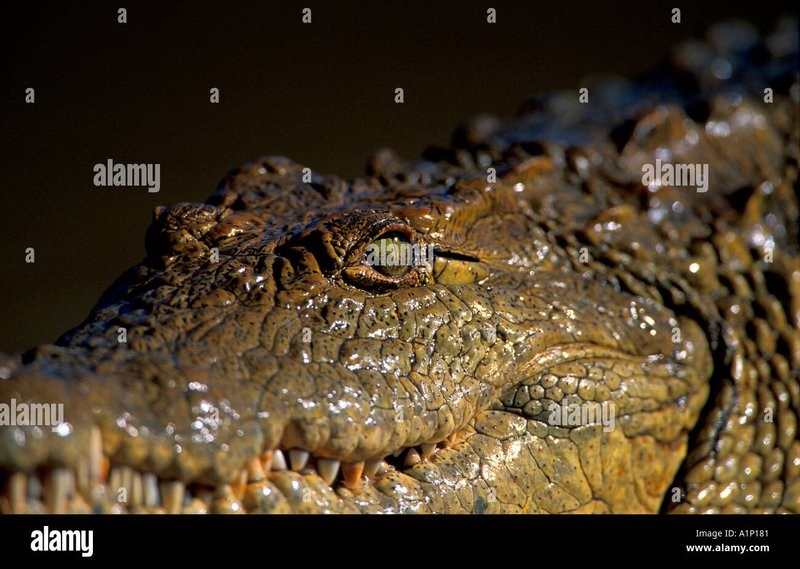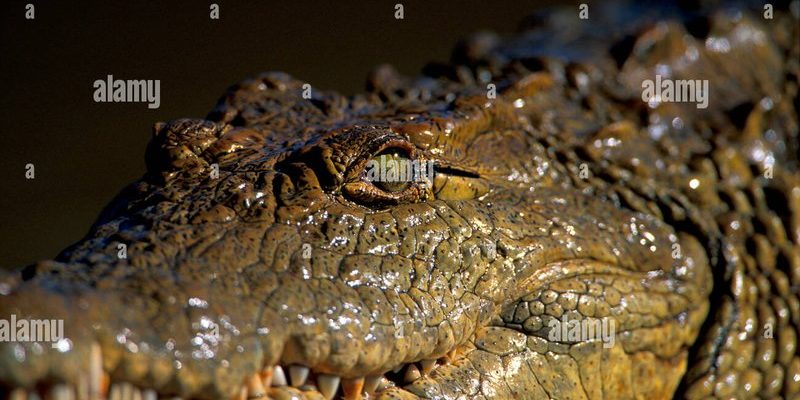
These magnificent creatures are more than just fearsome predators; they’re also remarkable survivors. With a lineage stretching back to the age of the dinosaurs, they have a rich evolutionary history that tells a story of adaptation and resilience. So, let’s take a closer look at the evolution of the Nile crocodile and explore how it has become the apex predator we know today.
Origins of the Nile Crocodile
The Nile crocodile (*Crocodylus niloticus*) has deep roots that trace back to the age of dinosaurs, around 200 million years ago. The crocodilian family tree is quite diverse, but the Nile crocodile stands out as one of the most widely distributed species. It’s believed that these creatures adapted as the climate changed, developing features that allowed them to thrive in a variety of habitats—from rivers and lakes to swamps and marshes.
One interesting aspect is their evolutionary connection to ancient crocodilians, like the *Deinosuchus*, which once roamed prehistoric waters. Let’s be clear: these were massive creatures, reaching lengths of over 30 feet! While today’s Nile crocodiles aren’t quite that big, you can sense their lineage in their strong jaws and impressive size. They share characteristics with their ancient relatives, indicating a successful design that has endured through countless environmental changes.
The Nile crocodile’s ability to adapt to different ecosystems is key. They’ve been found in various African countries, showcasing their versatility. Their habitat preferences range from freshwater environments to brackish areas, displaying resilience in the face of changing climates. To this day, they remain closely tied to the waterways of Africa, highlighting the importance of these habitats in their ongoing survival.
Physical Adaptations Over Time
Nile crocodiles are well-equipped for their role as apex predators. Over millions of years, they have developed specific physical adaptations that enhance their survival. One key adaptation is their powerful jaws, which can exert immense pressure—about 5,000 pounds per square inch! This strength allows them to capture and consume a range of prey, from fish to larger mammals.
Their skin is another remarkable feature, designed for protection and camouflage. The tough, scaly exterior not only serves as armor against predators but also helps blend into their environments. Imagine lying in wait among reeds and mud, almost invisible to unsuspecting prey. This camouflage gives them a decisive edge in hunting, making them one of the most efficient predators in the animal kingdom.
Additionally, Nile crocodiles possess unique respiratory adaptations. They can hold their breath underwater for extended periods—up to two hours in some cases. This ability allows them to stay hidden from both prey and threats, waiting patiently for the right moment to strike. These adaptations showcase how the Nile crocodile has effectively responded to its environment over time, ensuring its place at the top of the food chain.
Behavioral Evolution
Beyond physical traits, the evolutionary history of the Nile crocodile includes significant behavioral adaptations. Their social structures may not be what you’d expect in a predator. Nile crocodiles tend to be solitary, but they do exhibit social behaviors during mating season and basking. You might catch them sunning together, showing a surprising level of social tolerance.
During breeding season, females demonstrate remarkable maternal instincts, which is rare in reptiles. They build nests, lay eggs, and fiercely protect their young once they hatch. This nurturing behavior has evolved as a survival strategy, helping ensure that at least some of the offspring survive in a world filled with potential hazards. It’s almost heartwarming to think of these fearsome reptiles caring for their young against the odds.
Moreover, their hunting strategies have also evolved. Nile crocodiles are ambush predators, relying on stealth and patience. They often remain motionless for long periods, waiting for any animal that comes close to the water’s edge. This tactic has served them well over the ages and is a classic example of how behavior adapts to ensure survival in varying environments.
Environmental Influence on Evolution
The evolutionary history of the Nile crocodile is heavily influenced by environmental changes throughout the ages. From the shifting climates during the Ice Ages to the formation of new waterways, these changes have had a profound impact on their development. As the landscapes transformed, so did the opportunities for the crocodile to adapt and thrive.
For instance, during wet periods, Nile crocodiles expanded their range into newly flooded areas, taking advantage of abundant food sources. Conversely, during droughts, they may have retreated to more stable water sources. This adaptability to environmental fluctuations is crucial for their long-term survival.
Furthermore, the Nile crocodile has faced pressures from human activity, including habitat destruction and hunting. Despite these challenges, they have shown remarkable resilience. Conservation efforts have been initiated in several regions to protect their habitats and ensure their continued existence. It’s a testament to their evolutionary history, where adaptation is essential not just for survival in the wild, but for overcoming challenges posed by a changing world.
The Role of the Nile Crocodile in Ecosystems
As a keystone species, the Nile crocodile plays a vital role in its ecosystem. By controlling fish populations and helping maintain a balance in aquatic habitats, they contribute significantly to the health of their environment. When they hunt, they often target weaker or sick individuals, which promotes the overall health of prey populations.
Their presence affects not just the aquatic life but also land animals. When Nile crocodiles consume larger mammals that come to drink from the water, they influence the dynamics of land ecosystems as well. Their predatory behavior helps shape the populations of various species, demonstrating how interconnected all life is in an ecosystem.
Moreover, Nile crocodiles contribute to nutrient cycling in their environments. Their waste provides essential nutrients to aquatic ecosystems, fostering plant growth and supporting a wider range of wildlife. This cycle highlights the importance of maintaining healthy crocodile populations, as their decline could lead to significant shifts in the ecosystem.
Conservation and Future of the Nile Crocodile
Despite their impressive evolutionary history, the future of the Nile crocodile faces uncertainties. Habitat loss due to human expansion, pollution, and climate change threaten their populations. It’s crucial to recognize that these creatures are not just relics of the past but are vital players in their ecosystems today.
Conservation efforts are underway to protect their habitats and ensure their survival. Many wildlife reserves and national parks serve as sanctuaries for Nile crocodiles, providing a safe space for them to thrive without the pressures of human encroachment. Community awareness and education are also important, helping locals understand the ecological role of these reptiles and reducing negative perceptions.
As we look to the future, it’s essential to find a balance between human needs and the preservation of wildlife. Advocating for responsible land use, supporting conservation initiatives, and promoting coexistence can help secure the future of the Nile crocodile. After all, this remarkable species deserves to continue its story, blending ancient legacy with the modern world.
In conclusion, the evolutionary history of the Nile crocodile is a captivating tale of survival, adaptation, and resilience. As we explore the past, we also recognize the importance of ensuring their survival in our ever-changing world. Let’s continue to appreciate and protect these incredible creatures, who have been around long before us and will hopefully continue to thrive for generations to come.

